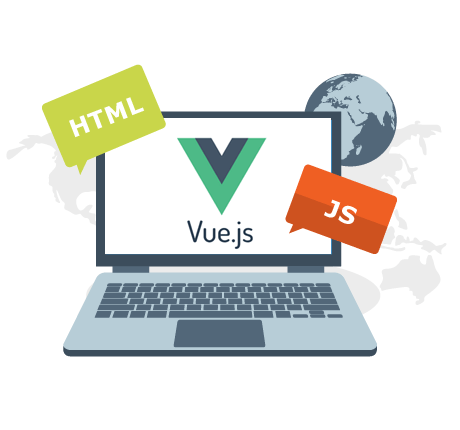Rise by Six: Your Daily Dose of Inspiration
Explore insights and stories that elevate your day.
Vue.js: The Framework That Keeps You on Your Toes
Discover why Vue.js is the game-changing framework you need! Stay agile, boost productivity, and master web development today!
Understanding the Basics: What Makes Vue.js Stand Out?
Vue.js distinguishes itself in the JavaScript framework landscape by seamlessly blending the best features of React and Angular. Its core philosophy revolves around the concept of a progressive framework, which means that it can be adopted incrementally. Developers can use it for building small components or scale it up to create complex, single-page applications (SPAs) without having to overhaul their entire stack. This flexibility makes it particularly appealing for both small projects and enterprise-level applications.
Another factor that makes Vue.js stand out is its approachable design and detailed documentation. Unlike some other frameworks that can have a steep learning curve, Vue.js allows developers to easily grasp its concepts through an intuitive API and comprehensive guides. Its reactive data binding system also simplifies the process of managing state, enabling developers to efficiently track and respond to changes in their application. With a supportive community and a robust ecosystem of plugins and tools, Vue.js empowers developers to enhance their productivity and create dynamic user interfaces with ease.

10 Essential Features of Vue.js That Every Developer Should Know
Vue.js is a progressive JavaScript framework that is designed for building user interfaces. One of the essential features that every developer should be aware of is its reactivity system. This allows data to be automatically synced with the view, enabling developers to create dynamic and interactive applications without manually updating the DOM. Moreover, Vue’s component-based architecture promotes reusability and maintainability, making it easier to scale projects efficiently.
Another crucial feature is the Vue Router, which facilitates the creation of single-page applications by providing navigation between different components without refreshing the page. Additionally, the Vuex state management library is vital for managing the application state in a centralized store, which helps manage complex data flows in larger applications. By mastering these essential features of Vue.js, developers can significantly enhance their productivity and the performance of their applications.
How to Get Started with Vue.js: A Complete Beginner's Guide
Getting started with Vue.js can seem daunting for beginners, but it is an incredibly accessible framework that emphasizes ease of use and flexibility. To begin your journey, the first step is to set up your development environment. You can start by visiting the official Vue.js website and downloading the latest version. Alternatively, you can use a CDN (Content Delivery Network) link to include Vue.js directly in your HTML file. Here's a basic example of including Vue.js using a CDN:
<script src='https://cdn.jsdelivr.net/npm/vue@2'></script>Once you have Vue.js set up, it's time to dive into its core concepts. Understanding the Vue instance is essential, as it serves as the root of every Vue application. You can create a new instance by using the new Vue() constructor and passing in an options object. In this object, you can define the data, methods, and template that make up your application’s functionality. Here’s a simple demonstration:
const app = new Vue({
el: '#app',
data: {
message: 'Hello, Vue!'
}
});